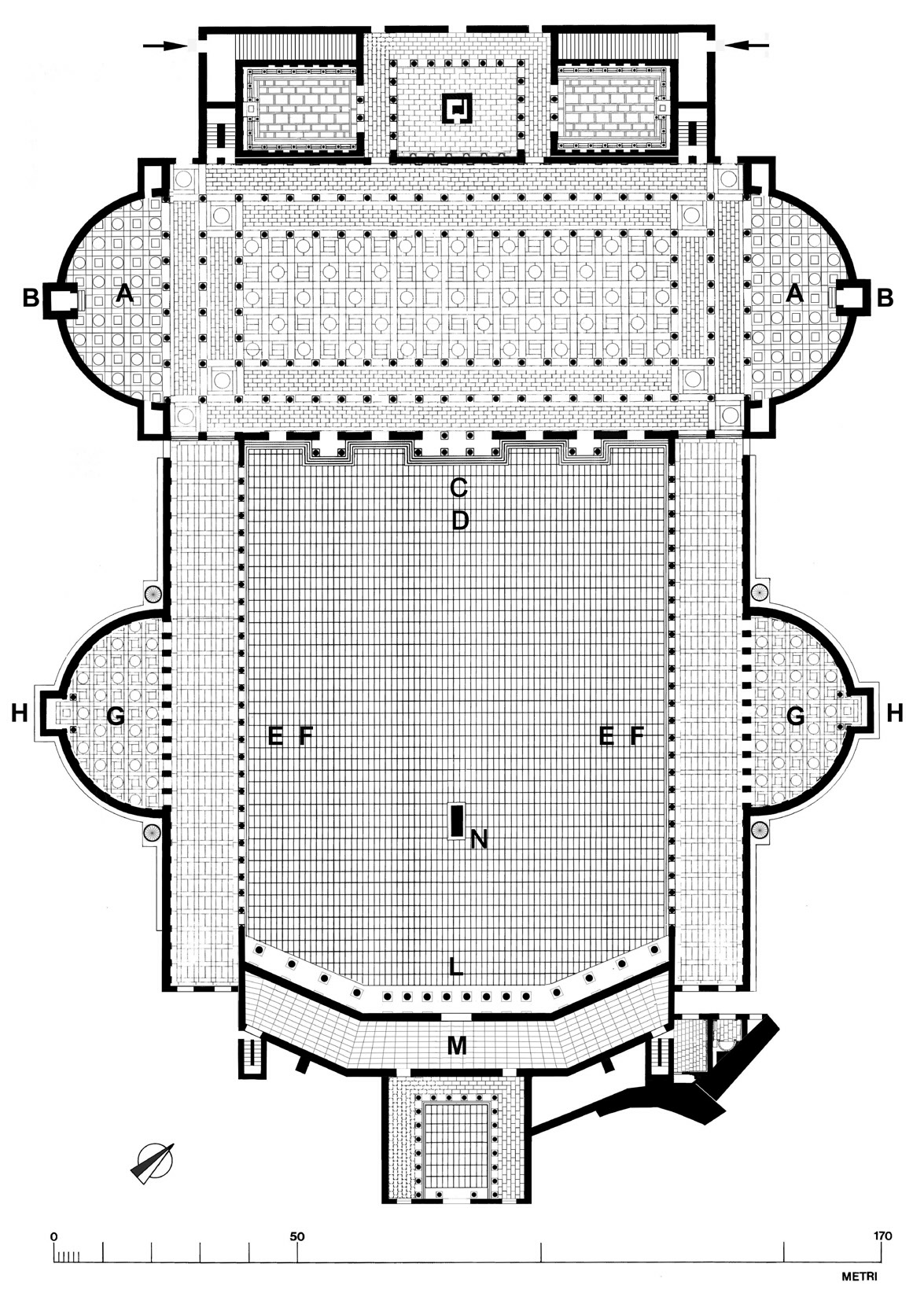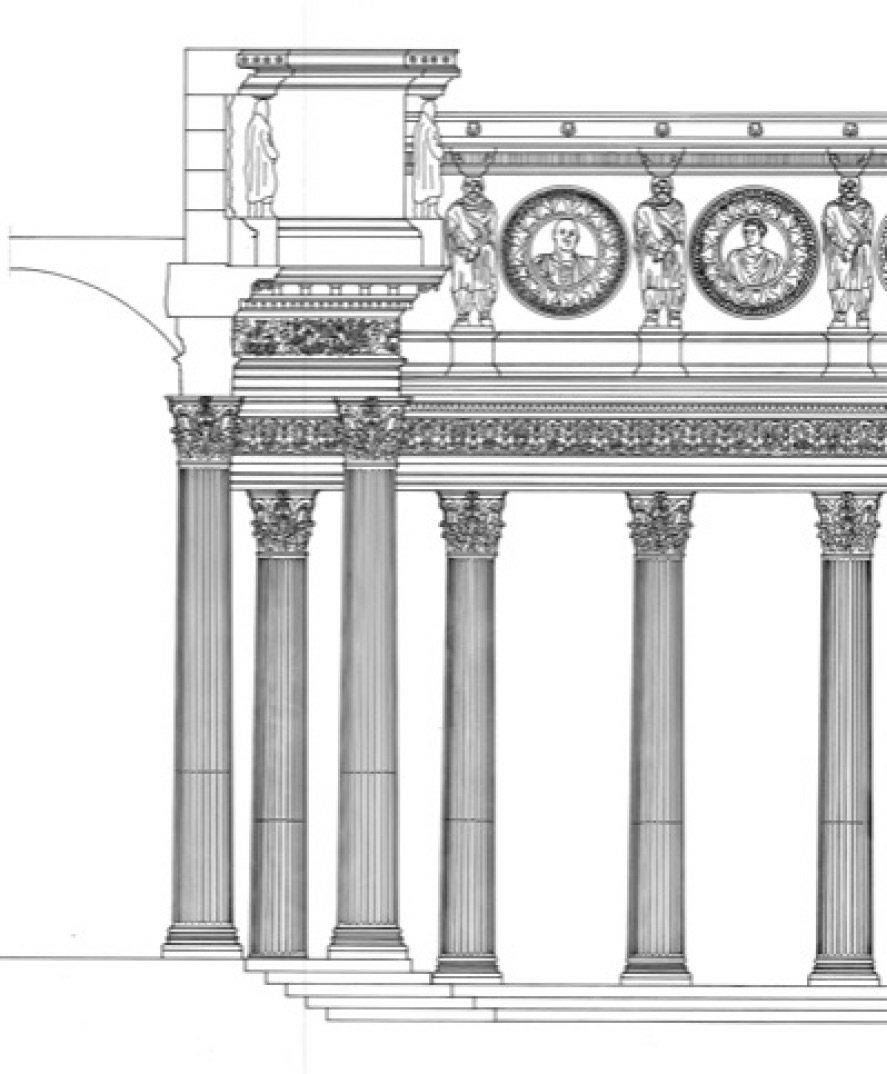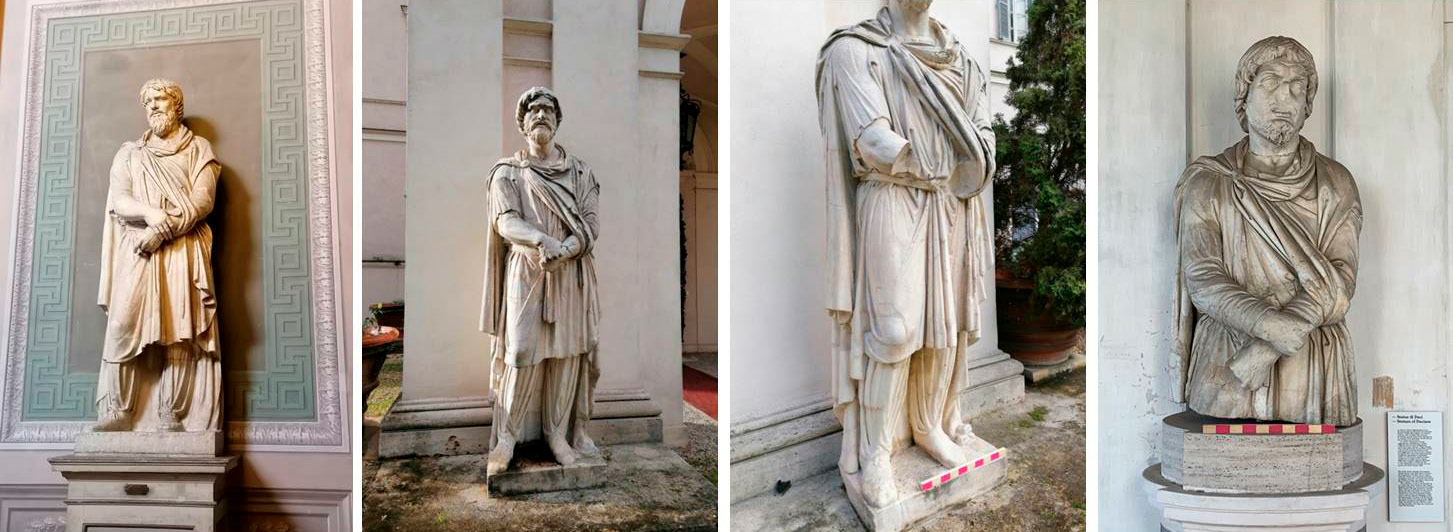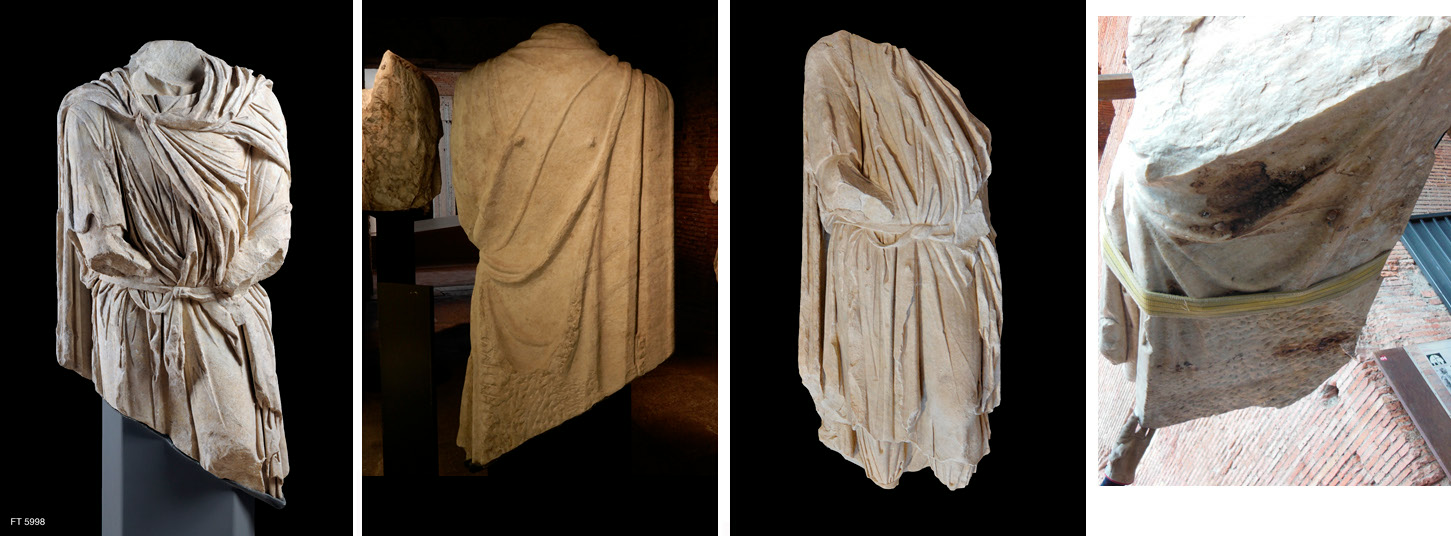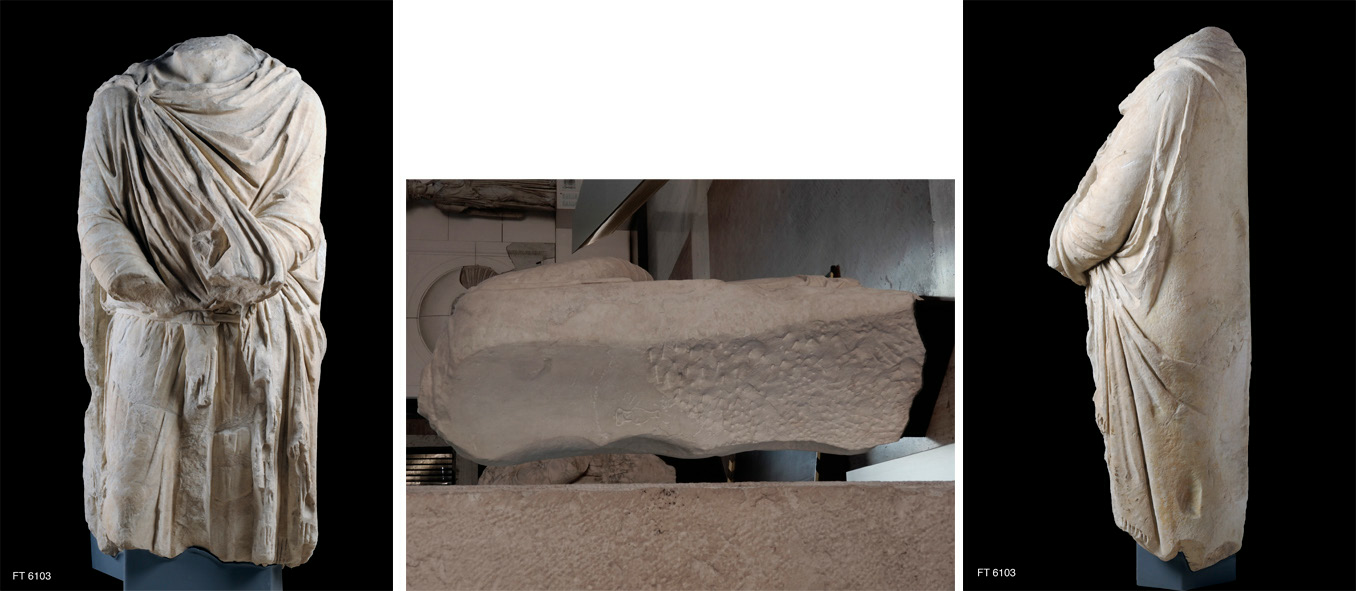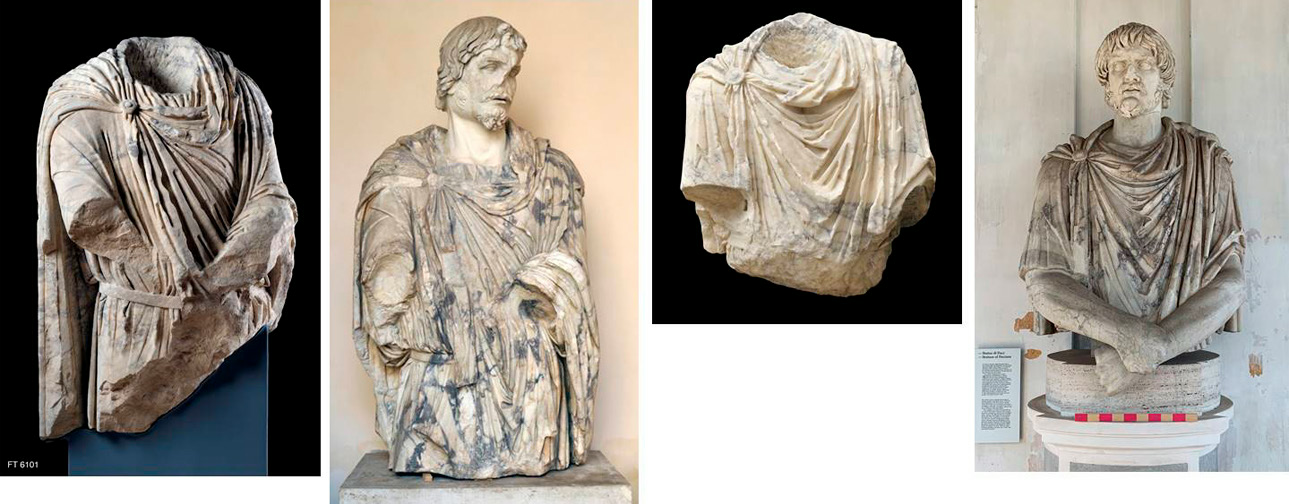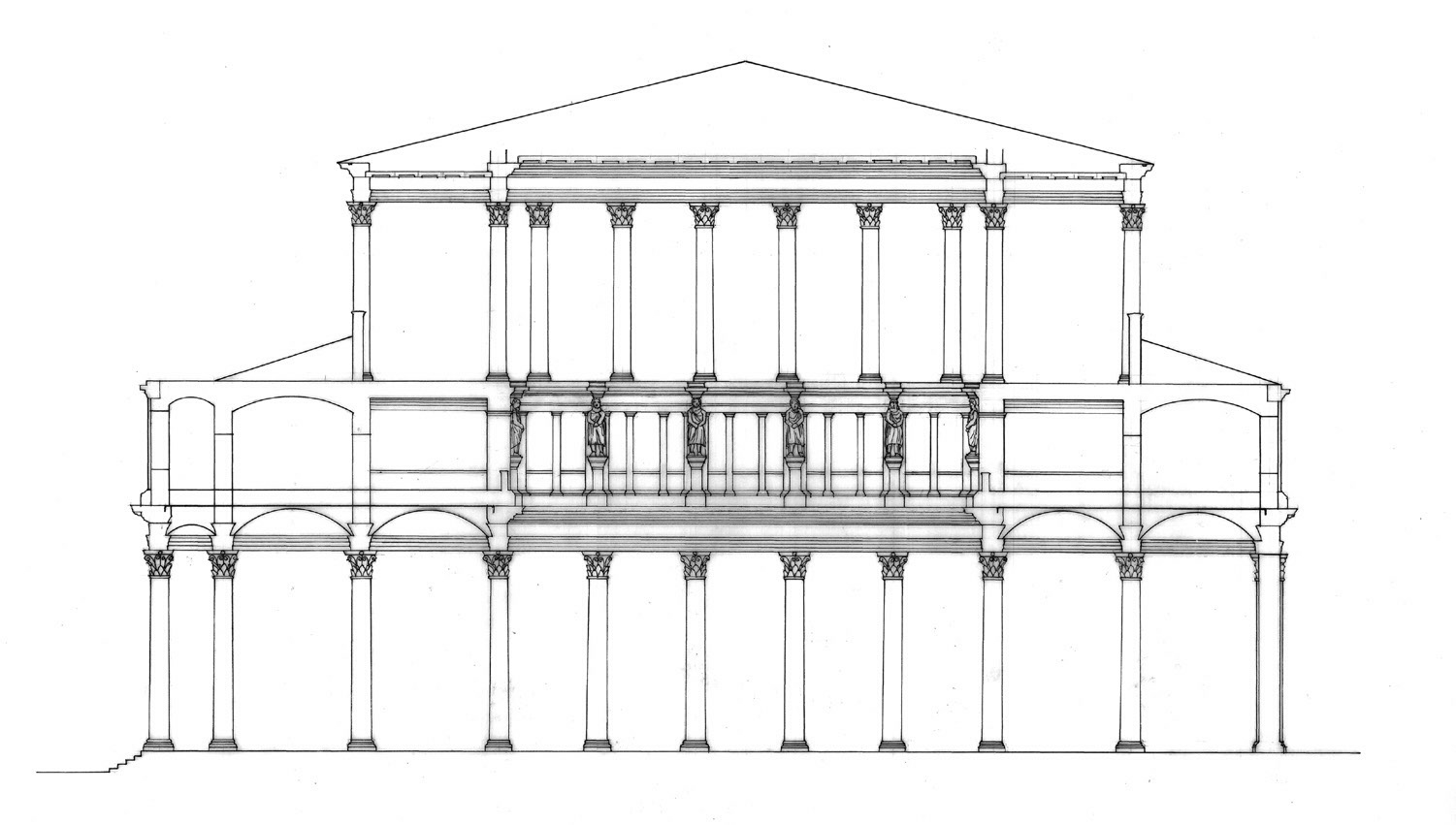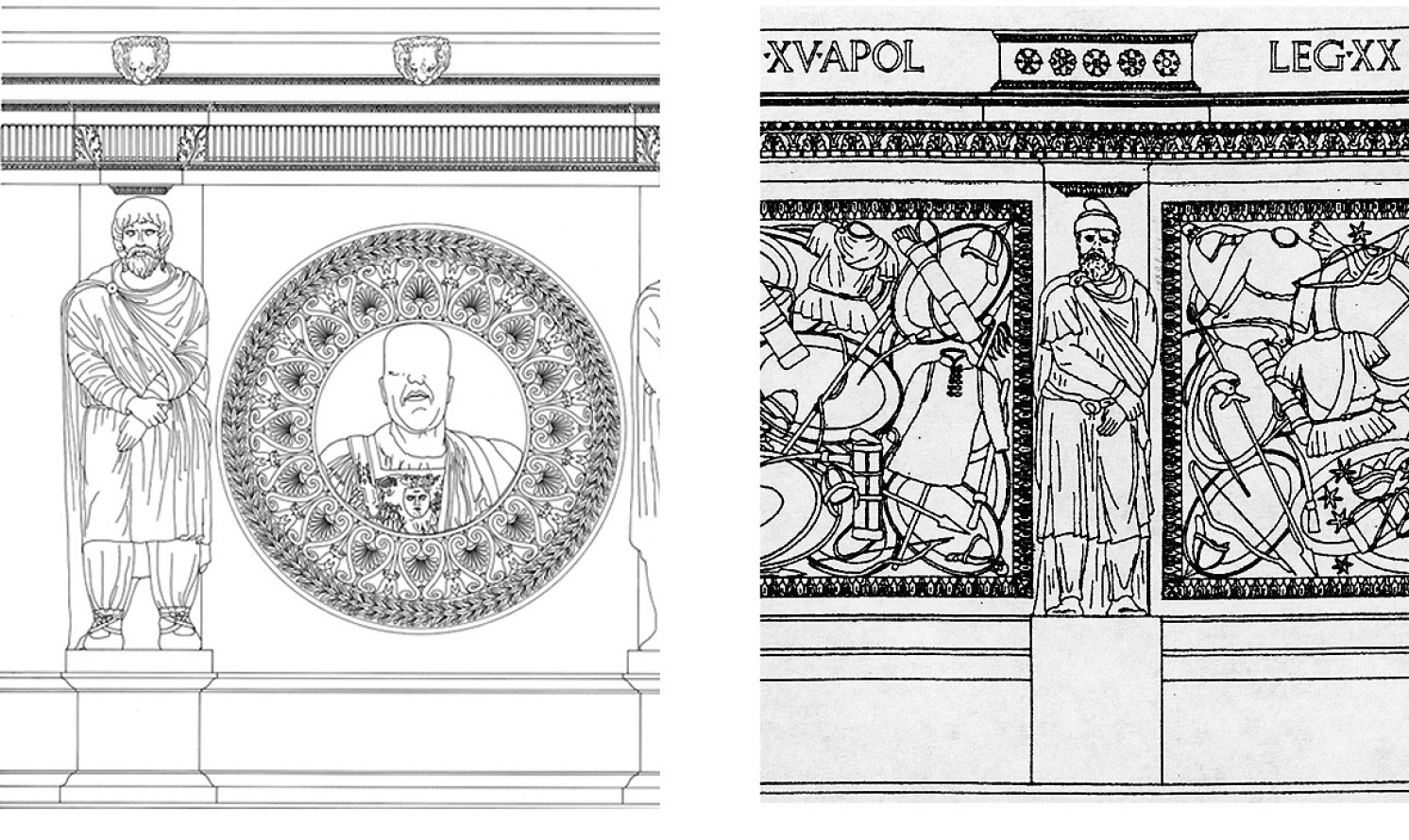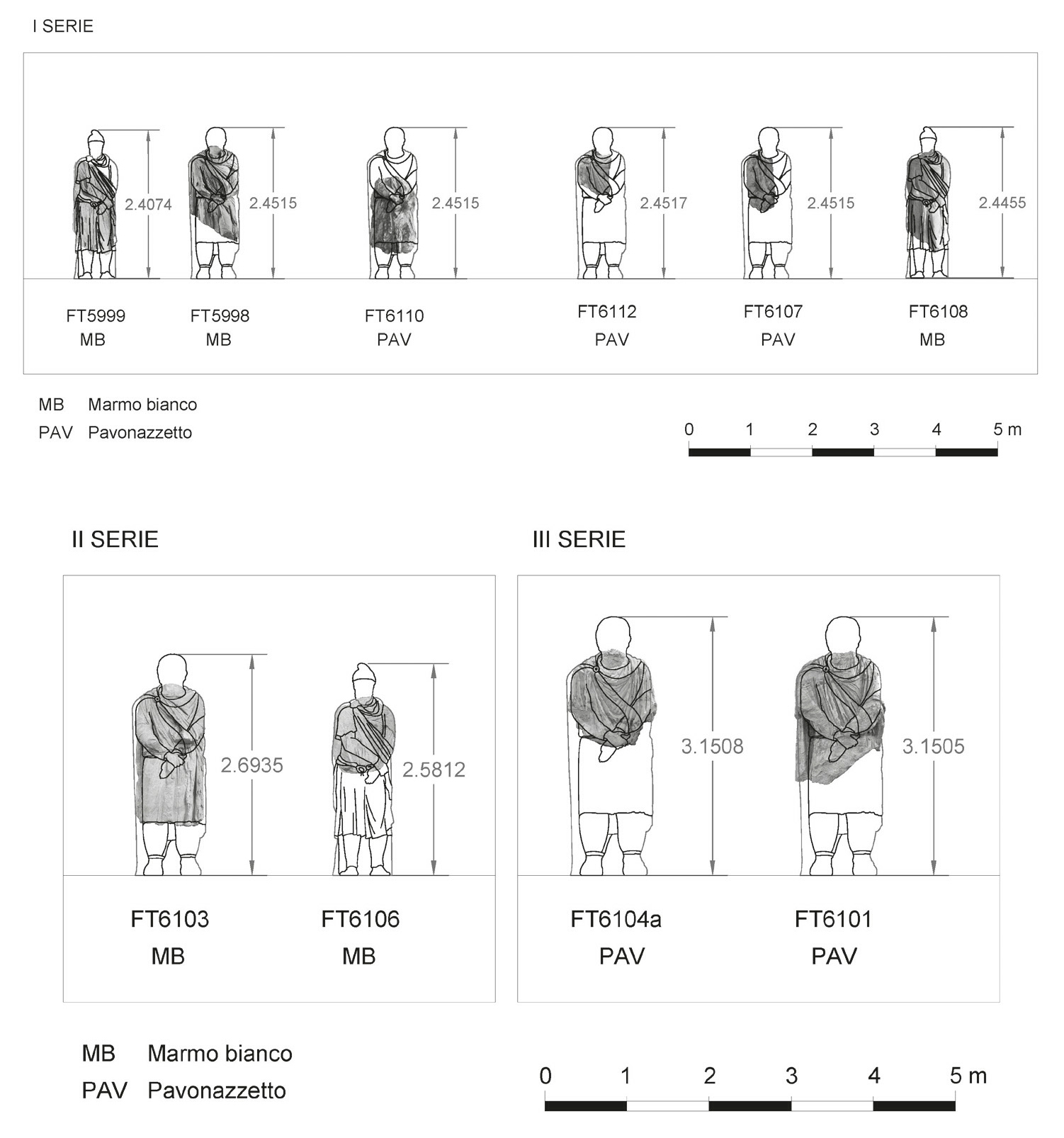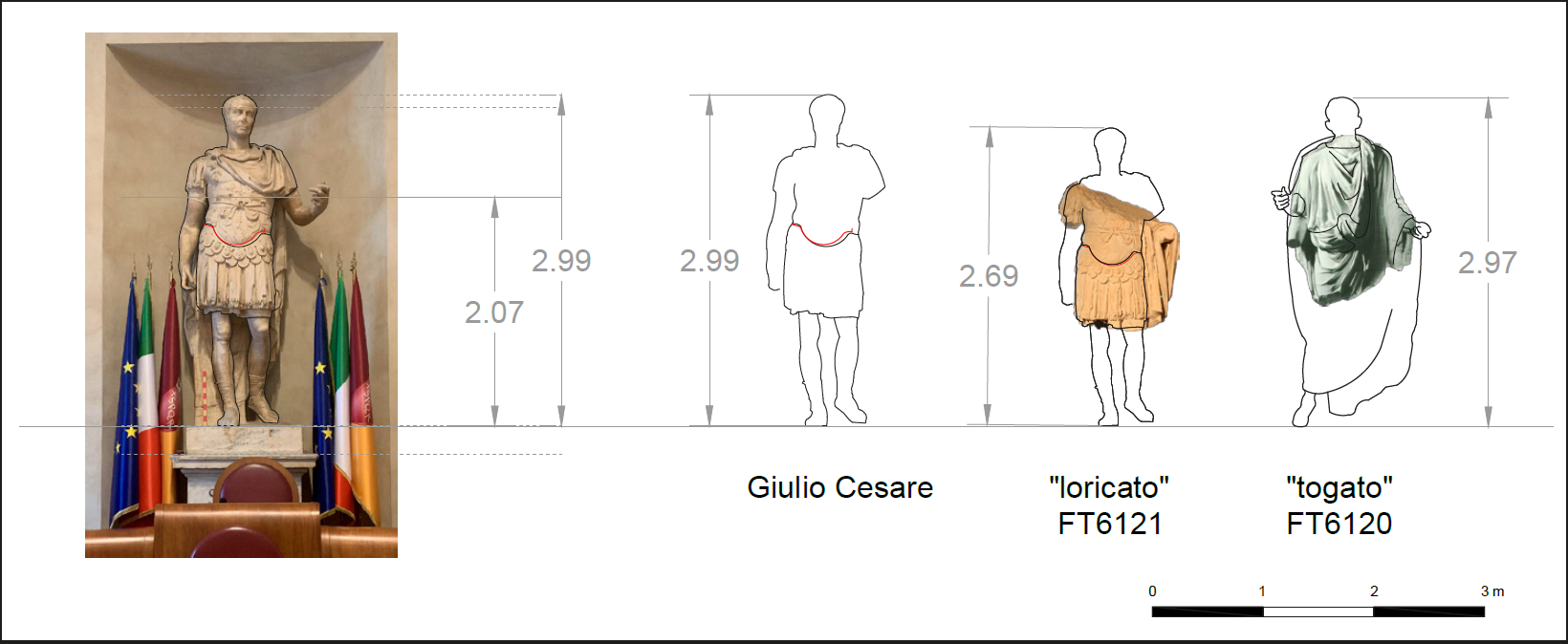Ungaro L., Di Cola V. 2022, Sculture dal Foro di Traiano: nuovi approcci metodologici, «Archeologia e Calcolatori», 33.2, 255-278 (https://doi.org/10.19282/ac.33.2.2022.14)
Copy to clipboard Download: BibTeXSculture dal Foro di Traiano: nuovi approcci metodologici
Lucrezia Ungaro, Valeria Di Cola
«Archeologia e Calcolatori» 2022, 33.2, 255-278; doi: 10.19282/ac.33.2.2022.14
Abstract
The Forum built in Rome by Trajan is a match of his political and military virtues: the defeated populations materialize with statues and high-reliefs in precious marble and are therefore an integral part of the marble triumph of the emperor and the Roman army. The statues of the Dacians are distributed on the most visible architectural parts of the complex, and they have different size, as well as different back surface treatment, depending on their location. In order to reconstruct the architectural composition together with the sculptural apparatus, a complete metrological analysis of the sculptures has been undertaken, alongside the examination of the material features of Daci statues (clothing, surface treatment) and of data yielded by archives and excavations that took place in the past centuries and recently in the 21st century. The work has been based on a method measuring bi-dimensional photographic shaped-set of all the Daci dispersed in several art collections, starting from the idea of working with a low-cost method without specific expensive software. The workflow combines bi-dimensional images, scaled to 1:1 reference, imported in AutoCAD in order to produce a single .dwg file, with good resolution but easy-to-manage during the data processing. Some interesting, albeit preliminary, goals have been achieved. In the first place, a measured catalogue of all the Dacian statues dispersed in the world has been quickly built. It was therefore possible to start the reconstruction, at least virtual, of the sculptural context of Trajan’s forum. Regarding the size and archaeological aspect of the sculptures, three dimensional series of Dacians have been grouped, which contributed, on the one hand, to confirm the results of previous studies, and on the other to advance the knowledge with new data.
Figures
Preview
Subjects:
Computer Graphics IP CAD Classification of archaeological finds
Download (PDF)Publishers:
CNR - Istituto di Scienze del Patrimonio Culturale
Edizioni All'Insegna del Giglio
This website uses only technical cookies strictly necessary for its proper functioning. It doesn't perform any profiling and doesn't use third party cookies of any kind.
Read our privacy policy for additional information.
By clicking 'OK' or closing this banner you acknowledge having read this information and accept the website's contents.

